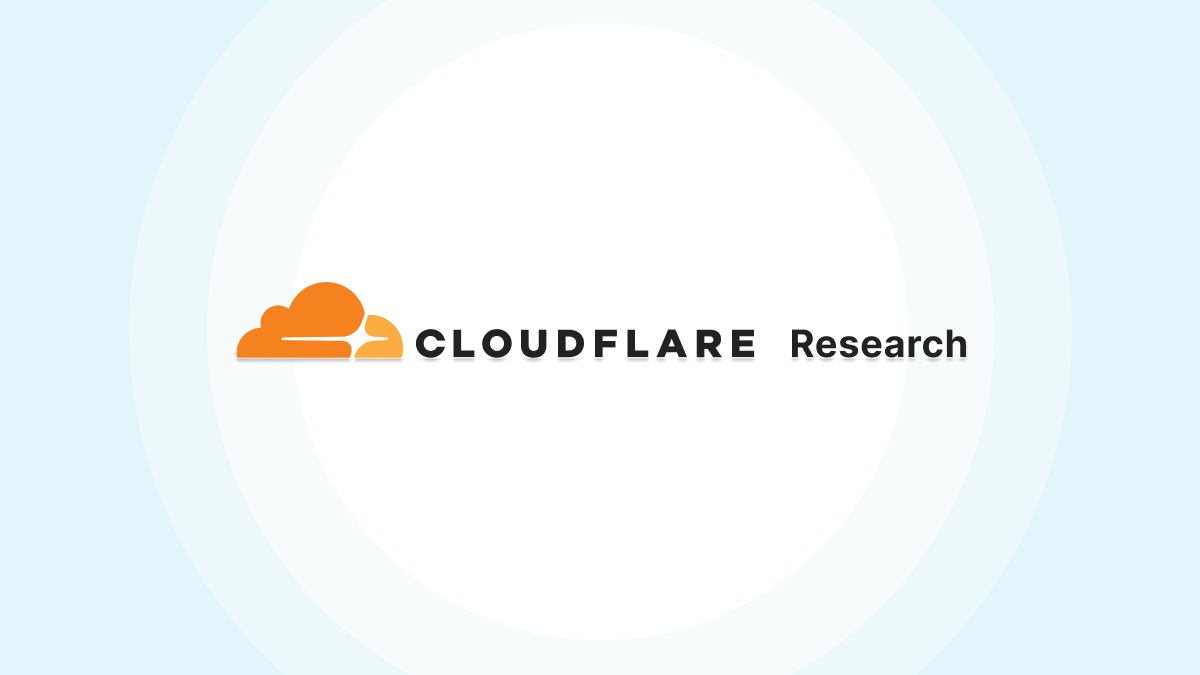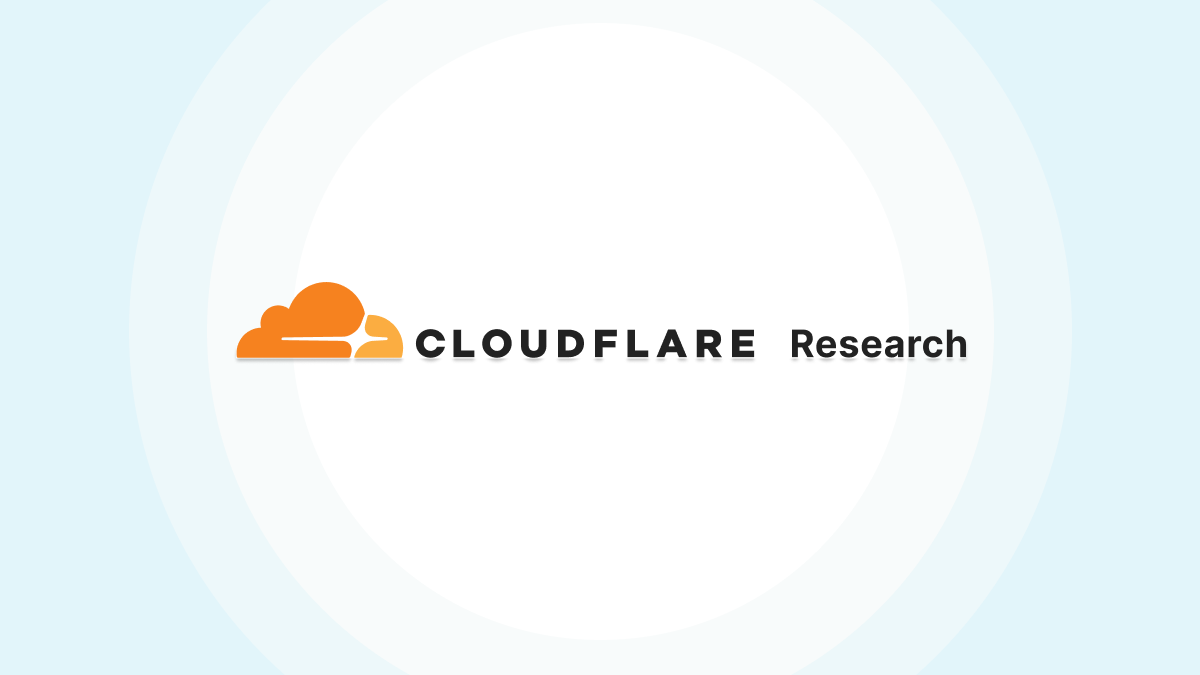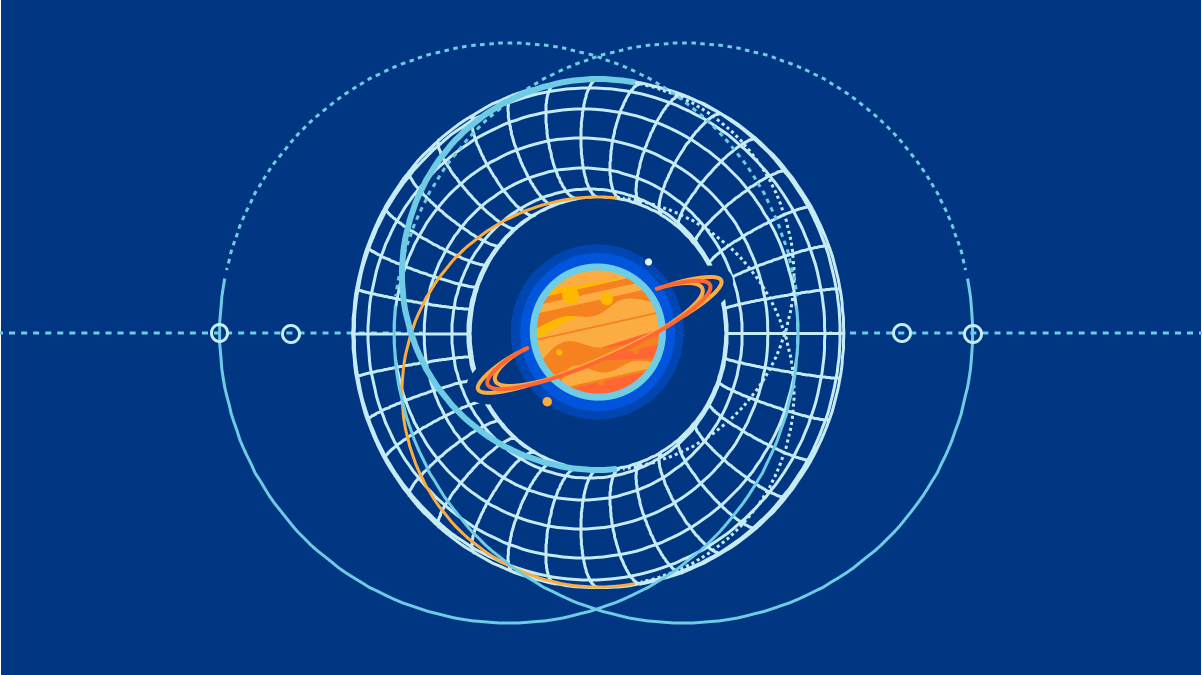Between 0x2 Nerds on Network Complexity

On the 14th (this Thursday), I’ll once again be a guest on a live stream with Jeff T and Jeff D on Between -x2 Nerds.. I think this is the URL, but you can check on their web page later to make certain.

On the 14th (this Thursday), I’ll once again be a guest on a live stream with Jeff T and Jeff D on Between -x2 Nerds.. I think this is the URL, but you can check on their web page later to make certain.
Figure 3-20: EC2 Instance, Elastic IP, and Security Group.
Continue reading


As highlighted yesterday, research efforts at Cloudflare have been growing over the years as well as their scope. Cloudflare Research is proud to support computer science research to help build a better Internet, and we want to tell you where you can learn more about our efforts and how to get in touch.
Cloudflare is built on a foundation of open standards which are the result of community consensus and research. Research is integral to Cloudflare’s mission as is the commitment to contribute back to the research and standards communities by establishing and maintaining a growing number of collaborations.
Throughout the years we have cherished many collaborations and one-on-one relationships, but we have probably been missing a lot of interesting work happening elsewhere. This is our main motivation for this Research hub of information: to help us build further collaborations with industrial and academic research groups, and individuals across the world. We are eager to interface more effectively with the wider research and standards communities: practitioners, researchers and educators. And as for you, dear reader, we encourage you to recognize that you are our audience too: we often hear that Continue reading


I spent my summer of 2020 as an intern at Cloudflare working with the incredible research team. I had recently started my time as a PhD student at the University of Washington’s Paul G Allen School of Computer Science and Engineering working on decentralizing and securing cellular network infrastructure, and measuring the adoption of HTTPS by government websites worldwide. Here's the story of how I ended up on Cloudflare TV talking about my award-winning research on a project I wasn't even aware of when the pandemic hit.
It all started before the pandemic, when I came across a job posting over LinkedIn for an internship with the research team at Cloudflare. I had been a happy user of Cloudflare’s products and services and this seemed like a very exciting opportunity to really work with them towards their mission to help build a better Internet. While working on research at UW, I came across a lot of prior research work published by the researchers at Cloudflare, and was excited to possibly be a part of the research team and interact with them. Without second thoughts, I submitted an application through LinkedIn and waited to hear back from Continue reading


As part of Cloudflare’s effort to build collaborations with academia, we host research focused internships all year long. Interns collaborate cross-functionally in research projects and are encouraged to ship code and write a blog post and a peer-reviewed publication at the end of their internship. Post-internship, many of our interns have joined Cloudflare to continue their work and often connect back with their alma mater strengthening idea sharing and collaborative initiatives.
Last year, we extended the intern experience by hosting Thomas Ristenpart, Associate Professor at Cornell Tech. Thomas collaborated for half a year on a project related to password breach alerting. Based on the success of this experience we are taking a further step in creating a structured Visiting Researcher program, to broaden our capabilities and invest further on a shared motivation with academics.
Our current research focuses on applied cryptography, privacy, network protocols and architecture, measurement and performance evaluation, and, increasingly, distributed systems. With the Visiting Researcher program, Cloudflare aims to foster a shared motivation with academia and engage together in seeking innovative solutions to help build a better Internet in the mentioned domains.
We expect to support the operationalization of ideas that emerge Continue reading
Last week’s update session of the AWS Networking webinar covered two hours worth of new (or not-yet-covered) features, including:
The recordings have already been published, either as independent videos or integrated with the existing materials. Enjoy ;)
Last week’s update session of the AWS Networking webinar covered two hours worth of new (or not-yet-covered) features, including:
The recordings have already been published, either as independent videos or integrated with the existing materials. Enjoy ;)
So, as a nerd, let's say you need 100 terabytes of home storage. What do you do?
My solution would be a commercial NAS RAID, like from Synology, QNAP, or Asustor. I'm a nerd, and I have setup my own Linux systems with RAID, but I'd rather get a commercial product. When a disk fails, and a disk will always eventually fail, then I want something that will loudly beep at me and make it easy to replace the drive and repair the RAID.
Some choices you have are:
The products I link above all have at least 8 drive bays. When you google "NAS", you'll get a list of smaller products. You don't want them. You want somewhere between 8 and 12 drives.
The reason is that Continue reading
Hello my friend,
Thanks a lot for all your interactions over our last post, it was very good feeling. As it attracted your attention, we decided to explore this topic further. Today we’ll focus on two main aspects: how you can figure out from Nokia SR OS CLI, what is your path to use in pySROS and how you visualise a configuration tree following YANG module.
2
3
4
5
retrieval system, or transmitted in any form or by any
means, electronic, mechanical or photocopying, recording,
or otherwise, for commercial purposes without the
prior permission of the author.
Facebook outage happened the last week caused a lot of discussions, how reliable automation is in general and if there are too much automatons these days already in the infrastructure systems. Really, if Facebook with their smartest network and automation engineers failed, should I stay far away from automation? We believe, everyone will find his or her answer. From our perspective, we know that Facebook will make their systems after failure more robust and working. By the way, in our training Continue reading

Like some other posts, I didn’t think I would write this one because it seemed obvious. But, after talking to a lot of engineers and customers, I realized that not everyone knows this trick. So here it is. The question is this: how to simulate a real host in a physical network environment when you don’t have computer at your disposal? Well, let’s take an example. The environment Here is an example with a very simple VXLAN topology consisting of two spines and two leafs. I’m using Cisco Nexus switches…
The post How to simulate a host in a real network? appeared first on AboutNetworks.net.
This chapter explains what components/services and configurations we need to allow Internet traffic to and from an EC2 instance. VPCs themselves are closed entities. If we need an Internet connection, we need to use an AWS Internet Gateway (IGW) service. The IGW is running on a Blackfoot Edge Device in the AWS domain. It performs Data-Plane VPC encapsulation and decapsulation, as well as IP address translation. We also need public, Internet routable IP addresses. In our example, we allocate an AWS Elastic-IP (EIP) address. Then we associate it with EC2 Instance. By doing it, we don’t add the EIP to the EC2 instance itself. Instead, we create a static one-to-one NAT entry into the VPC associated IGW. The subnet Route Table includes only a VPC’s CIDR range local route. That is why we need to add a routing entry to the Subnet RT, default or more specific, towards IGW. Note that a subnet within an AWS VPC is not a Broadcast domain (VPC doesn’t even support Broadcasts). Rather, we can think of it as a logical place for EC2 instances having uniform connection requirements, like reachability from the Internet. As a next step, we define the security policy. Each Subnet has a Network Access Control List (NACL), which is a stateless Data-Plane filter. The Stateless definition means that to allow bi-directional traffic flow, we have to permit flow-specific Request/Reply data separately. For simplicity, we are going to use the Subnet Default NACL. The Security Group (SG), in turn, is a stateful EC2 instance-specific Data-Plane filter. The Stateful means that filter permits flow-based ingress and egress traffic. Our example security policy is based on the SG. We will allow an SSH connection from the external host 91.152.204.245 to EC2 instance NWKT-EC-Fron-End. In addition, we allow all ICMP traffic from the EC2 instance to the same external host. As the last part, this chapter introduces the Reachability Analyzer service, which we can use for troubleshooting connections. Figure 3-1 illustrates what we are going to build in this chapter.
Figure 3-1: Setting Up an Internet Connection for Public Subnet of AWS VPC.

Great technology companies build innovative products and bring them into the world; iconic technology companies change the nature of the world itself.

Cloudflare’s mission reflects our ambitions: to help build a better Internet. Fulfilling this mission requires a multifaceted approach that includes ongoing product innovation, strategic decision-making, and the audacity to challenge existing assumptions about the structure and potential of the Internet. Two years ago, Cloudflare Research was founded to explore opportunities that leverage fundamental and applied computer science research to help change the playing field.
We’re excited to share five operating principles that guide Cloudflare’s approach to applying research to help build a better Internet and five case studies that exemplify these principles. Cloudflare Research will be all over the blog for the next several days, so subscribe and follow along!
Innovative companies don’t become innovative by having one group of people within the company dedicated to the future; they become that way by having a culture where new ideas are free-flowing and can come from anyone. Research is most effective when it is permitted to grow beyond or outside isolated lab environments, is deeply integrated into all facets of a company’s work, Continue reading
I totally understand that entities relying on sponsors have to become creative while promoting whatever theirs sponsors want to sell, but in my opinion this is a bridge too far:
[…] explore how Gluware aims to democratize automation; that is, get you quick wins around common tasks such as configuration changes and OS updates.
Democratizing automation? Because it’s authoritarian now? By providing the abilities like configuration changes and OS updates that have been available in network management tools like CiscoWorks or SolarWinds for ages?
You know what’s really hard when automating existing networks? Figuring out how to simplify them to the point where it makes sense to automate them. Will any shrink-wrapped GUI product solve that? Of course not.